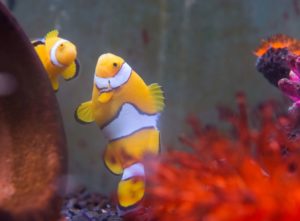 Visitors and residents along Queensland’s Great Barrier Reef can play a starring role as citizen scientists to build a brighter future for ‘Nemo’ clownfish and their anemone homes.
Visitors and residents along Queensland’s Great Barrier Reef can play a starring role as citizen scientists to build a brighter future for ‘Nemo’ clownfish and their anemone homes.
The I.C.-ANEMONE (or ‘I See Anemone’) app launch for National Science Week (13-21 August) invites holiday-seekers and Queenslanders to get involved in Saving Nemo by recording sightings in the wild via a new mobile phone app.
This monitoring will help marine biologists from Flinders University and the University of Queensland to expand their conservation efforts.
Climate change, anemone bleaching, land use practices and over-collection are all potential threats to the species’ survival now and into the future, says Flinders University Associate Professor Burke da Silva.
Up-to-date visualisations of data, for example maps of where particular clownfish are most frequently reported, will be available for people to compare their sightings to others in their region and beyond.
Using Australia as a baseline, the program will be expanded to include other popular tourism and high vulnerability in Southeast Asia where sustainable fishing practises have not been well enforced resulting in local extinctions.
IC-ANEMONE will help to create the first global database to better understand where clownfish and anemones occur and what threatens their survival in the wild.
The National Science Week initiative borrows from the conservation theme of the Disney movies Finding Nemo and sequel Finding Dory, urging the aquaria trade and pet owners to leave wild fish on coral reefs and protect marine sanctuaries from destructive exploitation.
Flinders marine biologist Anita Nedosyko says the new app will be actively promoted by seven tourist operators in Cairns and many others on the Reef, with key partner the Great Barrier Reef Marine Park Authority sharing data with its Eye on the Reef app.
University of Queensland School of Biological Sciences PhD candidate and Saving Nemo Queensland Project Coordinator Carmen da Silva said she is keen to show reef visitors how to use the app and get involved.
“This is a really exciting way to gain an understanding of the numbers and the health of anemones and clown fish in the region,” she says.
“If we can get more people excited about reef conservation, hopefully more people will want to help save the reef.”
Her mother, and program director Karen Burke da Silva, is also Associate Professor of Biodiversity and Conservation at Flinders University in South Australia.
“We know that numbers are declining at some coral reefs both in Australia and overseas,” Associate Professor Burke da Silva says.
“We would love citizen scientists to use the new IC-ANEMONE app and learn how they can identify species while snorkelling and diving during their holiday.
“The information collected will be combined with other publicly available data, such as weather and collection statistics, to build a better understanding for clownfish conservation.”
Data collected with the app will enable scientists to monitor density, diversity, health and interspecies relationships of clownfish and anemones in protected and exploited sites across the Great Barrier Reef.
From 13 August, scientists from both universities will demonstrate the new app at the Great Barrier Reef Marine Authority’s Reef HQ Aquarium in Townsville, Cairns and Lizard Island.
For more information, please go to http://www.savingnemo.org/ or follow on Twitter.
This Inspiring Australia initiative is supported by the Australian Government as part of National Science Week.

